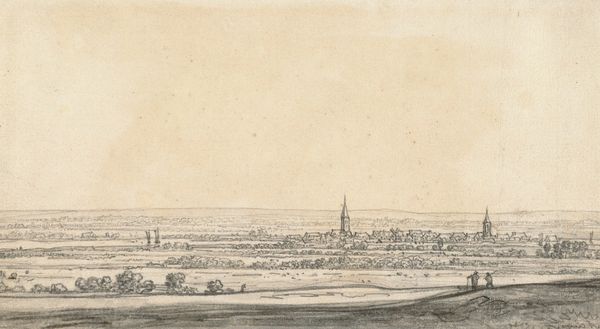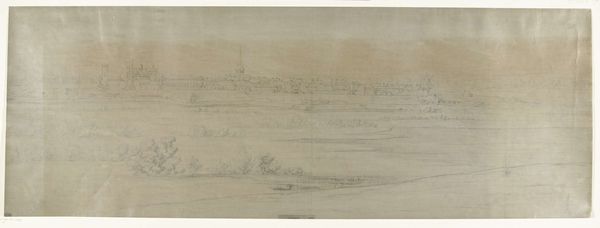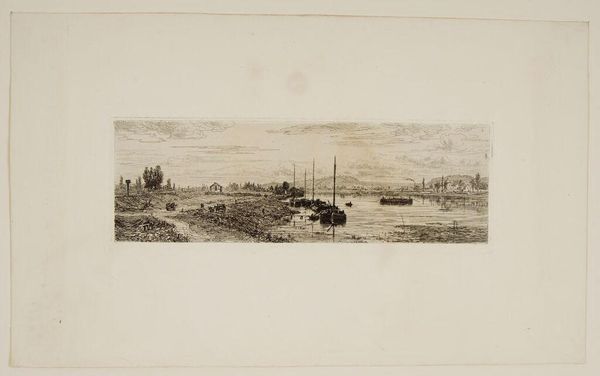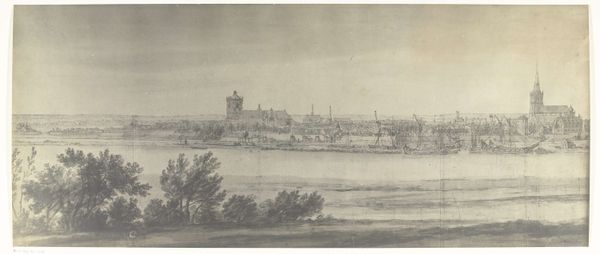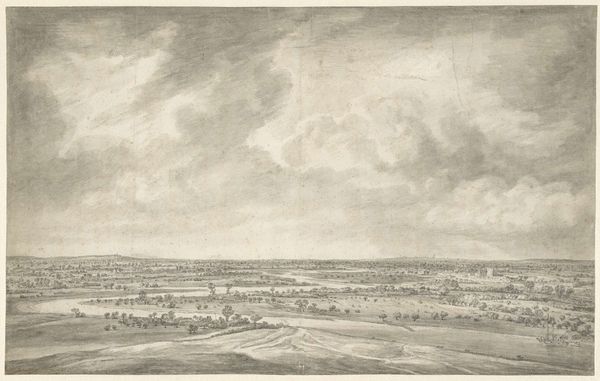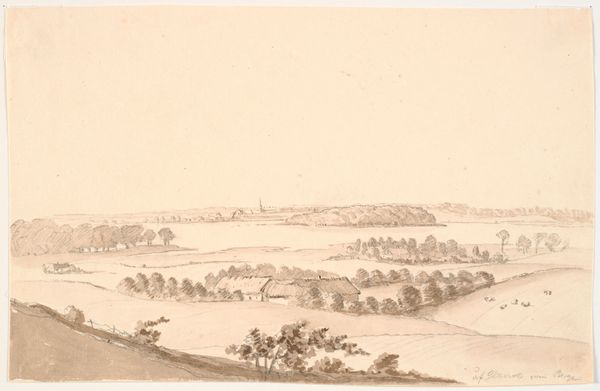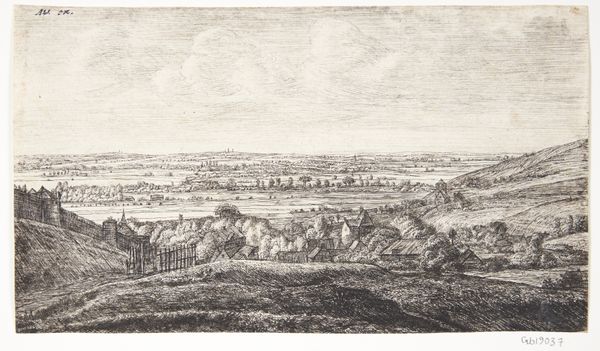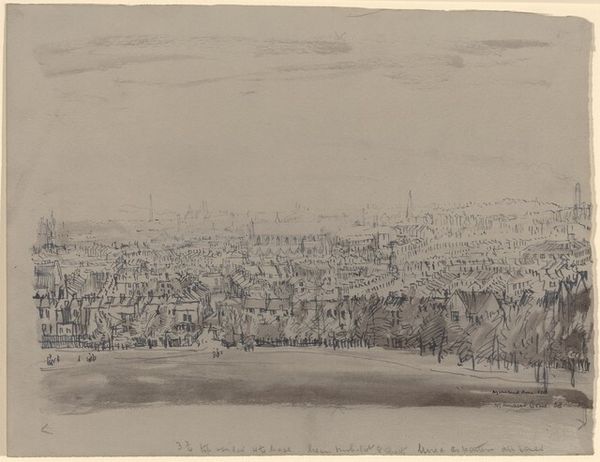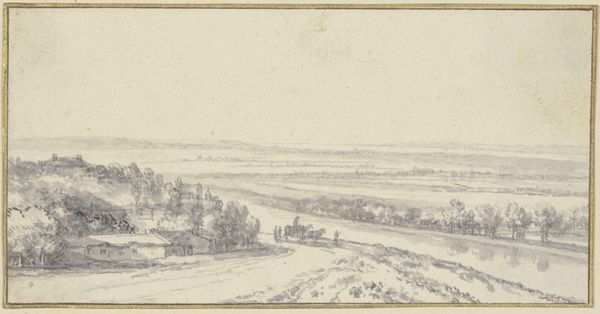
#
photo of handprinted image
#
vast and haze
#
natural shape and form
#
snowscape
#
organic shape
#
charcoal drawing
#
muted light
#
watercolour bleed
#
watercolor
#
shadow overcast
Dimensions: height 284 mm, width 945 mm
Copyright: Rijks Museum: Open Domain
Editor: So, here we have "Gezicht op Maastricht, 1672," created by the Moreau brothers sometime between 1900 and 1903. It's a landscape… almost monochromatic. The misty quality gives it this ghostly, melancholic feel. What do you make of it? Curator: The Moreau brothers’ deliberate anachronism is intriguing. Why create a view of Maastricht from over two centuries prior at the turn of the 20th century? It makes me think about how landscape painting, traditionally associated with power and ownership, is being re-evaluated in a rapidly industrializing world. Does this misty atmosphere evoke nostalgia, perhaps? Or is it a commentary on the elusiveness of the past and the construction of history itself? Consider the socio-political anxieties of the early 1900s: rising nationalism, colonialism... Could this be a reflection on Dutch identity? Editor: That's a lot to consider. The ghostliness of the image now seems less about melancholy and more about, well, the burdens of history. So, you're saying the very act of *re*presenting a past view is an act of power and identity construction? Curator: Exactly. What does it mean to look back? Who gets to define that "look," that view? Consider that 1672, the date in the title, marks the Rampjaar, the Disaster Year, when the Dutch Republic was invaded. It reframes how we might interpret their artistic intention, placing them within the history they depict, implicating them and us. Editor: I never considered the title as an entry point to interrogate the artists' social consciousness... I initially saw beauty, now I see calculated messaging. Curator: Precisely! Art isn't created in a vacuum. Examining art history with an awareness of intersectional dynamics allows for a richer, more critical understanding. Editor: This has completely changed how I perceive the piece. It's far more complicated, and much more interesting, than I first thought. Curator: Absolutely, and it prompts us to constantly question not only what we see but why we see it.
Comments
No comments
Be the first to comment and join the conversation on the ultimate creative platform.


